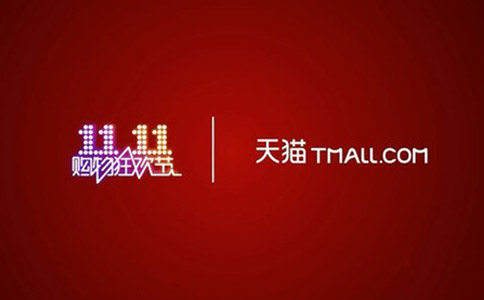According to the provisions of the Company Law, shareholders with more than 2/3 of the voting rights are absolute controlling; shareholders with more than 1/2 of the voting rights are relative controlling; shareholders with more than 1/3 of the voting rights have one veto.

Therefore, all companies should have a leading brother with a 1/2 or more shareholding. Everyone understands this principle.
However, due to various historical reasons, many startups in the e-commerce industry and traditional industries did not have the awareness of control at the beginning, and many shareholders divided the equity or had a high degree of dispersion. So, the equity structure fait accompli, how to solve the problem of company control on the premise that it is difficult to significantly change the equity structure and interest structure? Let’s look at the following 5 cases first.
5 cases of control of e-commerce companies
Case 1: An e-commerce company is developing rapidly, with sales of 5.23 billion yuan and a loss of 2.68 billion yuan in 2020. Due to years of losses, continuous financing is needed. From 2016 to 2020, the company received six rounds of financing from more than 10 venture capital firms including Hillhouse Venture Capital, Zhen Fund and Gaorong Capital. The shares of the company's main founder were diluted to 27.7%, which was already below the control line. So, how should he control the company?
Case 2: An e-commerce company has 6 founding shareholders, both of whom are relatives and friends, and their equity is highly fragmented, without controlling shareholders, and the largest shareholder only has 25.6% of the shares. At the beginning, everyone worked hard and the company developed rapidly. Now that it has reached a scale of over 100 million, shareholders have begun to differentiate: some shareholders are full of confidence and hope to continue to invest in new projects and continue to grow bigger and stronger; some shareholders are conservative, and are content with small wealth and are unwilling to take risks in investing. Some shareholders have strong abilities and stand on their own; some shareholders cannot keep up with the company's development and can only do some simple business work. Regarding important issues such as company strategic development, capital investment, profit distribution and performance appraisal, once a dispute arises and no one can make a decision, the company will fall into internal friction and disputes. How to break the deadlock?
Case 3: An e-commerce company, including four shareholders A, B, C and D, has a shareholding ratio of 45%, 32%, 12%, and 11% respectively, based on their respective investment capabilities and wishes, and has no controlling shareholder. Two years after the company was founded, the second largest shareholder B returned to the family due to having children and no longer participated in business management. At this time, the company is developing rapidly, and A, C and D are all working hard in the company, and are becoming increasingly dissatisfied with B's equity ratio and dividend mechanism based on shares. What should I do in this situation?
Case 4: A, the founder of an e-commerce company, quickly achieved the first place in the category by relying on the advantages of the local industrial belt. At the same time, he also trained a group of relatives, friends and old employees, allowing them to get a commission of one million. These people are very familiar with the local industrial belt and have the capital to start businesses, so they start their own businesses. Is this equivalent to cultivating a bunch of competitors? ! In order to avoid vicious competition between everyone, A announced that he would invest 20% to 30% of the shares in each new company of a resigned entrepreneur. At the same time, the supply chains of these affiliated companies are managed uniformly, and the upstream procurement will be centralized to improve bargaining power and quality control capabilities. This move has been unanimously supported by everyone. However, A is a small shareholder in these affiliated companies, so how can he have control over these companies?
Case 5: The founder of an e-commerce company has three shareholders A, B and C. They are close-knit like-minded friends. They started their own business together three years ago, and the equity was evenly distributed, accounting for 1/3 of each. The three shareholders have different abilities and contributions, and are in charge of different business sectors and functional departments, and make independent decisions. As the company grows and grows, the team and departments become larger and larger, a question emerges: Who will be responsible for the company's overall business management and strategic layout? When shareholders have disagreements, who will make major decisions at the company level?
Limited Liability Company: Workarounds for Control
(1) The situation of joint efforts of small shareholders
Article 43 of the Company Law stipulates: "Resolutions to amend the company's articles of association, increase or decrease the registered capital, and resolutions to merge, split, dissolve or change the company's form must be passed by shareholders representing more than two-thirds of the voting rights."
In view of the above case 3, B withdrew from the company's business management. The three shareholders A, C and D joined forces to hold a shareholding ratio of more than 2/3. Two measures can be taken through the resolution of the shareholders' meeting:
First, through the equity incentive plan, all shareholders will be diluted out a portion of the shares in the same proportion as an equity incentive pool to re-incentive for in-service shareholders.
Second, distribute the company's profits in the form of compensation and bonuses, and tilt towards on-the-job shareholders based on their responsibilities and performance contributions.
(2) The situation of counterattack by small shareholders
Article 42 of the Company Law: "The shareholders' meeting shall exercise their voting rights in accordance with the proportion of capital contribution; however, unless otherwise provided in the company's articles of association."
In other words, under normal circumstances, the major shareholder with more than 2/3 of the voting rights is absolute control and he has the final say; however, the company's articles of association have other provisions, so it will be in accordance with the company's articles of association!
For example, the company's articles of association may stipulate: the capital contribution ratio is inconsistent with the equity ratio, the capital contribution ratio is inconsistent with the voting rights ratio, and the capital contribution ratio is inconsistent with the dividend ratio.
Let’s take a look at a classic case: Zhong Jingxiang and You Shengliang, shareholders of Dongguan Xinyale Real Estate Company, hold a total of 90% of the shares and filed a lawsuit in court, demanding that the provisions of Article 18, paragraph 2 of the company’s Articles of Association are invalid.
Reason: Article 18, paragraph 2 of the company's Articles of Association stipulates: "The shareholders' meeting makes a resolution to amend the company's articles of association, increase or decrease the registered capital, and a resolution to merge, split, dissolve or change the company's form must be passed by shareholders representing 100% of the voting rights." As a result, many major decisions during the company's operation were not passed because Zhang Qingquan, a small shareholder, who accounts for 10% of the company, rejected it.
Judgment result: The court believes that the claim is invalid. According to the company's articles of association, the terms of the articles of association cannot be modified or deleted without the consent of 100% of shareholders. Article 18, paragraph 2 of the company's Articles of Association shall remain valid.
In view of this, for the previous cases 2, 4 and 5, there are at least three solutions under the premise that the equity structure cannot be adjusted significantly:
First, amend the articles of association: All shareholders elect a leader, modify the articles of association terms, and agree to hand over more than 2/3 of the voting rights to the leader, and he has the final say.
Second, the agreement for joint actors: All shareholders elect a leader and sign a joint actor agreement. When everyone has different opinions, the leader will have the final say.
Third, voting rights entrustment agreement: shareholders who hold more than 2/3 of the shares will sign a voting rights entrustment agreement and entrust their voting rights to the leader.
Co., Ltd.: AB share model at home and abroad
(1) AB shares listed overseas
For Case 1 mentioned above, you should have guessed it, and it is about Perfect Diary. Perfect Diary has been listed on Nasdaq and adopts the AB share model. Class B shares are held by founding shareholders and their teams, with 10 times voting rights per share (the Hong Kong stocks do not exceed 10 times and the US stocks can reach 20 times). Class A shares are generally held by external investor shareholders, and each share has only one voting rights.
Huang Jinfeng, the main founder of Perfect Diary, personally owns 27.7% of the company's Class B equity and has a voting right of up to 60.2%! Coupled with the voting rights of the other two founders, the Perfect Diary founders team has firmly controlled the company.
(2) Domestic Science and Technology Innovation Board AB Stock Model
Article 103 of my country's "Company Law" stipulates that each share of a joint-stock company has one voting right. Therefore, under normal circumstances, all A-share listed and New Third Board companies in China are joint-stock companies and cannot implement AB shares.
However, Article 131 of the Company Law also stipulates that the State Council may make other provisions on the issuance of other types of shares in the company other than those provided for this Law. This laid the groundwork for the modification of the Company Law. Without amending the Company Law, the State Council will implement AB shares on the Science and Technology Innovation Board after the provisions are made by the State Council.
Ucloud UCD, the first AB-share company on the Science and Technology Innovation Board, was listed on the Science and Technology Innovation Board on January 20, 2020. After the completion of this issuance, the three founders Ji Xinhua, Mo Xianfeng and Huakun hold a total of 23.1197% of UCD shares and have 60.0578% of the voting rights.
Limited Partnership: GP holds control rights
Article 2 of the Partnership Law stipulates: "A limited partnership is composed of general partners and limited partners. The general partner shall bear unlimited joint and several liability for the debts of the partnership, and the limited partner shall bear liability for the debts of the partnership to the limit of the amount of capital contributions they subscribed."
Article 67: "A limited partnership shall be carried out by the general partner."
Article 68: "Limited partners shall not represent the limited partnership enterprise if they do not perform partnership affairs."
In simple terms, the difference between a general partner and a limited partner is as follows:
(1) General Partner (GP):
① Be unlimited joint and several liability for partnership debts;
② Have full management and control over partnership affairs;
③Has the right to sign external legal documents on behalf of the partnership fund
④GP is in a core position and has actual business control.
(2) Limited Partner (LP):
① Be liable for the debts of the partnership based on the amount of capital contribution it subscribes
② Limited partners do not perform partnership affairs
③ Do not represent limited partnerships to the outside world.
④LP only has restrictive rights.
Therefore, control of a limited partnership is in the hands of the GP/general partner and has nothing to do with its personal equity ratio. Even if a GP is a small shareholder and only has 1% of the shares, it can still have the final say on the partnership affairs.
Summary of this article
If due to historical reasons, some core founders of e-commerce companies do not occupy a controlling position, then there are three ways to provide relief if the equity structure and stakeholders cannot be significantly changed:
① For limited liability companies, they can gain control by amending the terms of the articles of association, signing a consensus actor agreement or a voting right entrustment agreement.
② For joint-stock companies, they can use AB share structure control companies overseas; if they are listed on the Science and Technology Innovation Board in China, they can also use AB share structure control companies.
③For limited partnerships, the company can be controlled by serving as a GP/general partner.







 EN
EN CN
CN
